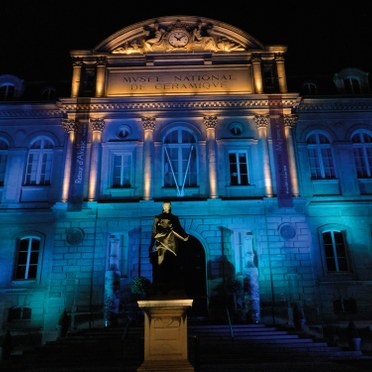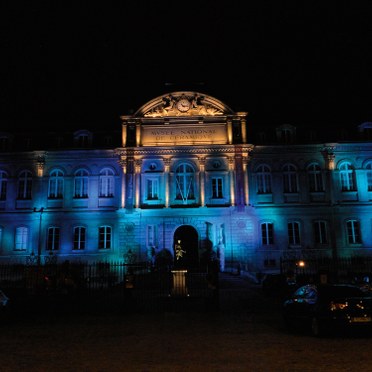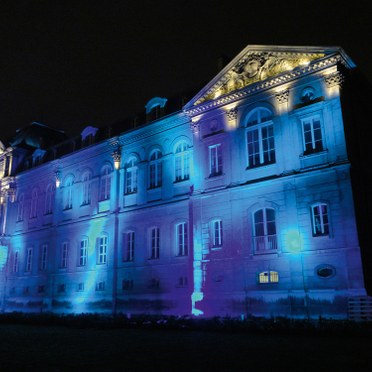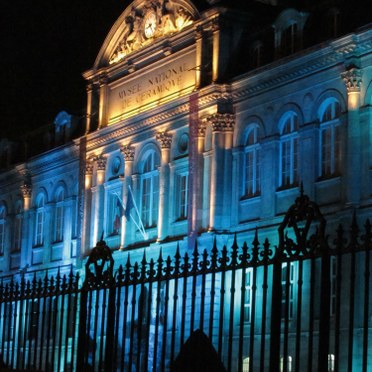Musee de la Ceramique, France
- Lamp efficacy
Lamp efficacy
The light distribution from the LEDs allows precise beam control, maximising useful light and minimising energy use.
- Ballast classification
Ballast classification
Controlling the electricity supply to the lamp (Energy Efficiency Index).
- Luminaire distribution
Luminaire distribution
Controlling light emission using elliptical refractor glasses which vary the beam shape and direct it to the correct location.
- System efficacy
System efficacy
Combining optical and thermal control within the luminaire (luminaire lm/W).
- Presence/absence detection
Presence/absence detection
Presence: Lights automatically turn on/off with movement. Absence: Lights automatically turn off and must be manually switched on.
- Daylight detection
Daylight detection
Artificial lighting which responds to the natural light conditions.
- Constant illuminance
Constant illuminance
A function designed to produce correct light levels for the duration of the maintenance period.
- Task-scene setting
Task-scene setting
The DMX system allows the user to set scenes and adapt the lighting to different tasks over time.
- Timed off
Timed off
Automatic cut-off can be installed to turn all lights off during unoccupied hours.
- Task lighting
Task lighting
Lighting task areas with the correct amount of light.
- Zoning of lighting
Zoning of lighting
Lighting is zoned according to area use.
- Maintenance schedule
Maintenance schedule
Maintenance must be performed in response to product age, performance and environment.
- Waste light
Waste light
A high quality lighting design allied to the precise optical control from the floodlights minimises spill light onto adjacent areas, further reducing energy use by using light efficiently.
- Reflectance
Reflectance
Taking advantage of light which is reflected from the surface within the space.
- Visible smart metering
Visible smart metering
Results of actions can be quickly seen as increased or decreased energy use to encourage responsible energy consumption.
Contrast LED floodlights turn River Seine landmark blue
When the Grand Paris Seine Ouest (GPSO) urban community decided to provide better public lighting in those riverside areas for which they were responsible, they asked agency Concepto to design a scheme which would enhance the architectural and historic interest of the National Museum of Ceramics in Sèvres, as well as provide a signature landmark to the river nightscape. The historic building, designed by Landin in 1876 as the world's first museum dedicated to fine ceramics, forms part of a wider heritage site and also incorporates the porcelain manufacturer nationale de Sèvres.
The lighting designers, mindful of the historic use of blue enamel on Sevres porcelain - notably the distinctive 'blue celeste' (celestial blue) and 'blue lapis' (a deep blue-black) over glazes, bathed the building's stunning façade in a constantly changing palette of blue light. The effect is achieved by using 45 Thorn Contrast LED-54 floodlights and a DMX control system. Twenty three standard monochromatic blue projectors and 22 custom bi-chromatic cyan floodlights have been installed - all with a choice of refractor glasses to give different elliptical beam patterns. Such is the flexibility of the DMX system that the lighting programme can produce 8 subtle changes of colour and a lighting fade – after a week this shimmering illumination of colour settles down, leaving a static (frozen) 'picture like' effect.
The size, colour and number of beams needed varied with the effect required, the building architecture, the positions in which the equipment would be mounted and the amount of light in the vicinity. For lighting design purposes Concepto divided the façade into segments, focusing light density on the central block - the corps de logis - and side wing pavilions. The compact, disc-shaped, LED floodlights, which use remote control gear, are carefully positioned along the frontage on the edge of the flower beds to make them inconspicuous by daylight. They consume one-third the energy and last 5-6 times longer (50,000-60,000hrs) than conventional projectors, thus minimising running and maintenance costs.
Key architectural features, such as the pediment and the statue of Bernard Palissy, which stands in front of the building, are lit with amber and white LED luminaires from various suppliers. These produce a golden light reminiscent of the gold decoration also used on Sèvres porcelain.
The resultant scheme, which onlookers can view from the Pont de Sèvres as well as from Boulogne-Billancourt on the other side of the river, makes an important contribution to GPSO's urban structure and helps establish an engaging image and identity after dark.
Scheme Associates
Client: Grand Paris Seine Ouest (GPSO) and Ville de Sèvres
Design: Roger Narboni agency Concepto, Virginia Carreno Van der Plaetsen, project manager
Installation and Public Private Partnership partner: ETDE
Thorn: Philippe Ferreira (prescription) and Stephen Lacroix, Roissy office
Key facts
- 23 Contrast LED floodlights with 54 blue LEDs
- 22 Contrast LED floodlights with 2 x 27 blue / green (cyan) LEDs
- DMX Control
- Refractor lenses for elliptical beam shapes
- 8 lighting scenes + time fade
- Total power consumption: 5.5 kW static (3 kW dynamic




